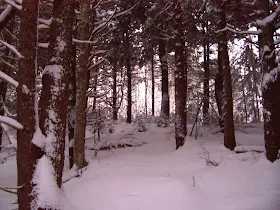 |
| Why are trees such social beings? Because there are advantages to working together. |
We already know that it takes a village to raise a child. We shouldn't be surprised to learn that it takes a forest to raise a sapling.
Author Peter Wohlleben says just that in his new book The Hidden Life of Trees: What They Feel, How They Communicate.
"Why are trees such social beings? Why do they share food with their own species and sometimes even go so far as to nourish their competitors? The reasons are the same as for human communities: there are advantages to working together. A tree is not a forest. On its own, a tree cannot establish a consistent local climate. It is at the mercy of wind and weather. But together, many trees create an ecosystem that moderates extremes of heat and cold, stores a great deal of water, and generates a great deal of humidity. And in this protected environment, trees can live to be very old. To get to this point, the community must remain intact no matter what. If every tree were looking out only for itself, then quite a few of them would never reach old age. Regular fatalities would result in many large gaps in the tree canopy, which would make it easier for storms to get inside the forest and uproot more trees. The heat of summer would reach the forest floor and dry it out. Every tree would suffer.
Every tree, therefore, is valuable to the community and worth keeping around for as long as possible. And that is why even sick individuals are supported and nourished until they recover. Next time, perhaps it will be the other way round, and the supporting tree might be the one in need of assistance.
A tree can be only as strong as the forest that surrounds it."
Every tree is precious and meaningful in the forest, just as every human is precious and meaningful in the human world. Never mind "survival of the fittest", we have evolved like the trees, through mutual assistance and cooperation.
We as individuals are only as healthy and strong as our supporting communities, and as society as a whole.
 |
| This magnificent Eastern Hemlock in the back yard forest could not have survived for 100s of years without the support of its surrounding community. |
Yes, it does take a forest. I've been fascinated by all we are learning about trees and their elaborate communication systems. I love to stand in a forest and think of how everything I'm seeing is interconnected. What an awesome forest you have right outside your back door. Love the photo of the Hemlock.
ReplyDeleteWhat a beautiful thing to contemplate. There was a great program that we watched recently that talked about how plants communicate. I'll admit that I had no idea how connected the plant world is to each other.
ReplyDeleteThat hemlock is gorgeous!